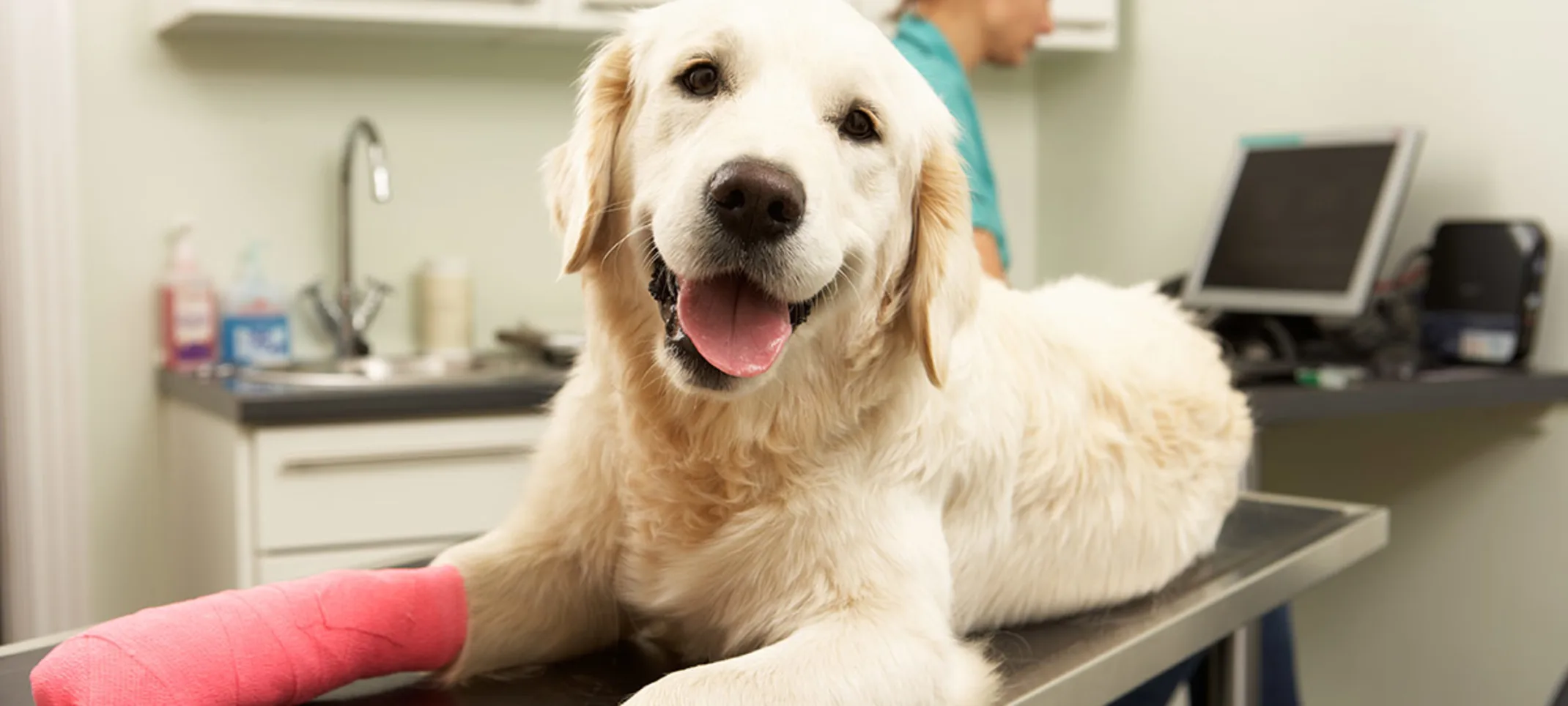Heartland Animal Hospital
Orthopedic Surgery
Orthopedic surgery can help pets who suffer from joint problems, torn ligaments, broken bones, and even help correct congenital problems.

Overview
Orthopedic surgery treats bones, joints, ligaments, and muscles—areas in which your pet may feel pain in from a variety of conditions. Many of these surgeries require specialized equipment and advanced training. In some cases, recovery includes extended periods of home-care and/or rehabilitation therapy. At Heartland Animal Hospital, we have surgeons who can perform basic procedures such as a Luxating Patella Repair, or an Extracapsular ACL Repair.
Why would my pet need orthopedic surgery?
Orthopedic surgery can help animals who suffer from joint problems, torn ligaments, broken bones, and can even help correct congenital problems. The veterinary team at Heartland Animal Hospital will help you walk through the diagnostic process including referral for specialized care if needed.
When should I seek orthopedic care for my pet?
Pay attention to the way your pet is moving around, any unusual changes may mean they have an orthopedic condition.
Typical symptoms of an orthopedic disorder include difficulty getting up, favoring a leg intermittently when walking, limping - swelling in the leg, stiffness or decreased activity level. If you notice any of these problems, you should take your pet to our facility for an examination.
What orthopedic care can Heartland Animal Hospital provide?
An orthopedic exam begins with hands-on manipulation and palpation, and visually observing gait and other movements. The process will almost always include radiographs (X-Rays) of the suspected trouble spots as well. With current technology, it is possible for these images to be sent for a consult by a radiologist for rapid results. Our doctors will work closely with you to determine the best course of action for your pet whether through conservative therapies such as pain control and laser therapy, surgical intervention, simple fracture repairs, or referral to an orthopedic or rehabilitation specialist.
Luxating Patella Surgery
Patellar luxation is a dislocated knee cap and most commonly seen in small breed dogs. Most patellar luxation occurs when the patellar displaces from its normal position to the inside of the knee. Pets with this condition may have an intermittent non-weight bearing lameness and you may even hear a popping noise in their knee. There are many ways to treat this from a simple knee brace for a Grade 1 luxation, to realignment surgery for lower grade luxations. Bring your pet in so we can determine the best way to treat the luxation.
Extra-Capsular ACL Repair
This procedure corrects an injury by stabilizing the knee joint with a synthetic implant secured across the outside of the joint capsule to mimic the cruciate ligament that kept the femur from sliding across the tibia.
Femoral Head Osteotomy FHO
Some diseases or injuries to the hip joint are treated by removing the head and neck of the femur, eliminating the pain from bone-on-bone contact or instability and allowing the muscles in the area to work with scar tissue to stabilize the joint.
Fracture Repairs
A fracture is a break in the bone, typically caused by trauma, a disease or tumor in the bone, or stress applied to a certain bone. There are many factors involved in selecting the proper treatment for a fractured bone: the type of break, location, and your pet’s individual characteristics. If external splinting is appropriate, the application and follow-up visits will all happen right here at Heartland Animal Hospital. Although this is a less invasive option, it is not without its challenges. You will play a huge role in your pets healing process since this can be a 6-8wk journey with very specific homecare responsibilities for best success. Splints must be changed regularly in the hospital, often requiring sedation to keep your pet comfortable and immobile during the process. Radiographs must be repeated periodically to monitor healing progress.
What orthopedic procedures will I have to see a specialist for?
Tibial Plateau Leveling Osteotomy (TPLO)
Tibial plateau leveling osteotomy is used to repair a torn ligament by changing the dynamic of the animal’s knee. The ligament becomes irrelevant to the stability of the knee by counteracting the force that caused the ligament to tear. The reconstructive surgery cuts the tibia bone, rotates it, and becomes held in place with metal plates. This is an extremely effective long-term solution for the injury.
Tibial Tuberosity Advancement (TTA)
Tibial tuberosity advancement is a reconstructive surgery used to repair a torn ligament by changing the dynamic of the ligament so that it is no longer necessary for the stabilization. The surgery uses titanium implants and has a quick recovery time.
Total Hip Replacement
In cases of severe damage such as degeneration from hip dysplasia or dislocation caused by an accident or injury, total healing or pain control may not be possible. A THR is just like it sounds – removing the damaged joint and implanting a mechanical alternative – and may be an option to give your pet a new lease on life.
Advanced Fracture Repairs
There are times that the nature of an injury necessitates more advanced procedures for your pet to achieve full recovery. An orthopedic surgeon will have the tools and expertise to apply plates, pins, or other external devices to stabilize the bone as needed for healing.

